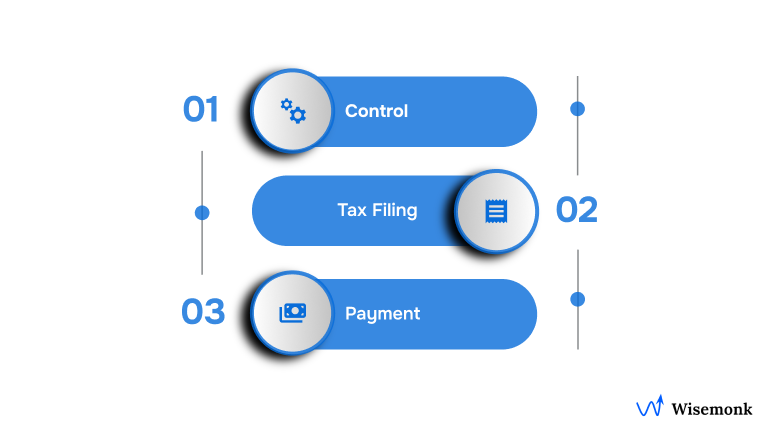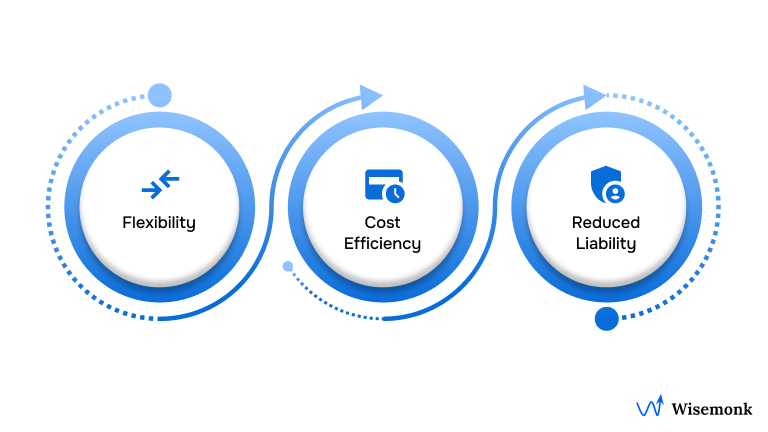- 1099 Contractors are self-employed, working on a contract basis with control over their schedules and methods.
- W-2 Employees work for an employer under their supervision, with fixed hours and benefits like health insurance and paid time off.
- 1099 Contractors are responsible for their taxes, including self-employment tax, while W-2 Employees have taxes withheld by the employer.
- 1099 Contractors are paid per project or on an hourly basis, while W-2 Employees receive a regular salary or hourly wage.
- Understanding the differences between 1099 Contractors and W-2 Employees helps businesses ensure proper classification and avoid IRS penalties.
Deciding whether to classify a worker as a 1099 independent contractor or a W-2 employee can be one of the most confusing and critical business decisions. Many businesses struggle to determine the correct classification, leading to potential misclassification risks and tax complications.
So, how do you know whether someone is a 1099 independent contractor or a W-2 employee? And what does this decision mean regarding tax filing and benefits? Understanding the differences can help businesses avoid penalties and ensure compliance with IRS guidelines.
Let’s explore these distinctions and what they mean for employers and workers.
What is a 1099 Independent Contractor?
A 1099 independent contractor is a self-employed individual hired to complete specific projects or provide services for a business. These workers operate on a contract basis, providing flexibility and expertise for businesses without being permanent employees.
Key Characteristics:

- Control: 1099 contractors determine their work schedules and methods, and the business oversees only the outcome.
- Tax Filing: These contractors file their independent contractor tax return and are responsible for paying self-employment taxes, including Social Security and Medicare.
- Payment: Contractors are paid based on the terms of their contract (project, hourly, or milestone) without any automatic tax withholding. They are responsible for their taxes, including estimated tax payments.
Next, let’s look into a W-2 Employee.
What is a W-2 Employee?
A W-2 employee works for an employer under their supervision, with set schedules, work methods, and direct oversight. Unlike 1099 independent contractors, W-2 employees have their taxes withheld by the employer and are entitled to company benefits.
Key Characteristics:
- Control: W-2 employees follow the employer's instructions on when, where, and how to perform their tasks. Employers have more control over the work process.
- Tax Filing: Employers handle all tax withholding for W-2 employees, including income tax, Social Security, and Medicare contributions. Employees don't need to worry about making quarterly tax payments.
- Benefits: Employees receive various benefits, such as health insurance, paid time off (PTO), retirement plans, and other perks that contractors don't typically receive.
Now, let's dive into the key differences between 1099 contractors and W-2 employees.
Key Differences Between 1099 Contractors and W-2 Employees
When deciding whether to hire a 1099 independent contractor or a W-2 employee, it's essential to understand their key differences. These affect everything from work control to compensation and benefits.
With these differences in mind, let’s explore how tax filing differs for each.
How Tax Filing Differs for 1099 Contractors and W-2 Employees
Understanding the tax filing process is crucial when determining whether to classify a worker as a 1099 independent contractor or a W-2 employee. The tax responsibilities for each type of worker differ, and proper filing ensures compliance with the IRS.
1099 Contractors
For 1099 contractors, the tax filing process is more involved as they are self-employed. Here's how it works:
- Tax Filing: 1099 contractors file their independent contractor tax return using Schedule C (Form 1040), which reports business profits or losses.
- Self-Employment Tax: Contractors are responsible for paying self-employment tax (15.3% of earnings), including Social Security and Medicare contributions.
- Tax Filing Deadline: Contractors must file Form 1099-NEC with the IRS by January 31 for any payments over $600 received during the previous year.
W-2 Employees
For W-2 employees, the tax filing process is simpler since the employer automatically withholds taxes. Here’s how it works:
- Tax Filing: W-2 employees receive W-2 forms from their employers at the end of the year, detailing their income and the taxes withheld.
- Tax Withholding: Employers handle all tax withholding for W-2 employees, including FICA taxes (Social Security and Medicare) and income tax, making the process simpler for employees.
Next, let’s explore why businesses choose 1099 contractors over W-2 employees.
Why Do Businesses Choose 1099 Contractors Over W-2 Employees?

Choosing between hiring 1099 independent contractors and W-2 employees is often influenced by the needs of the business. Here are some key reasons why businesses may prefer contractors:
- Flexibility: 1099 contractors allow businesses to scale up or down quickly. Whether it's for a short-term project or to tap into specialized skills, contractors enable businesses to hire without the commitment of a full-time employee.
- Cost Efficiency: By hiring 1099 contractors, businesses can avoid the costs associated with employee benefits, such as health insurance, retirement plans, and paid time off. Additionally, contractors do not require payroll taxes, reducing overhead expenses.
- Reduced Liability: Since contractors are typically self-employed, businesses have limited liability. Employers are not responsible for things like insurance or tax obligations that come with hiring a full-time employee, making it easier for businesses to manage their workforce.
Let’s now understand the risks associated with misclassifying these workers.
Misclassification Risks and Penalties
Misclassifying workers can lead to significant financial and legal consequences for businesses. The IRS can impose heavy penalties if a worker is incorrectly classified as a 1099 independent contractor when they should be a W-2 employee.
Here are some of the key risks:
- Tax Risks: If a business misclassifies a worker, it may face serious penalties, including fines, back wages, and FICA tax penalties. The IRS could also require the business to pay the employer's portion of withheld taxes that should have been paid for the employee.
IRS Tests for Classification
The IRS uses three main categories to determine whether a worker should be classified as an independent contractor or an employee:
- Behavioral Control: Does the business control how and when the work is done, or does the worker have more freedom to determine their schedule and methods?
- Financial Control: Who controls the financial aspects of the work, such as expenses, profits, and investments? Independent contractors typically bear these costs themselves.
- Relationship: What is the nature of the relationship between the business and the worker? Is it short-term and project-based, or long-term with ongoing responsibilities?
The next step is to learn how to ensure proper worker classification.
How to Ensure Proper Worker Classification
To avoid misclassification risks, businesses must carefully evaluate their working relationships and ensure that workers are classified correctly according to IRS guidelines.
Here's how to ensure proper classification:
- IRS Guidelines: Businesses must assess their relationship with workers based on IRS criteria to ensure they are classified correctly as 1099 independent contractors or W-2 employees. This classification should be based on the control over the work and the financial aspects of the work, as defined by the IRS.
Tools to Help
If there is uncertainty about worker classification, there are tools available to help businesses make the right decision and stay compliant:
- Form SS-8: If a business is unsure whether a worker should be classified as an independent contractor or employee, it can use Form SS-8 to request an official determination from the IRS regarding a worker’s status.
- Consult Tax Advisors or HR Specialists: For additional guidance, businesses should consult tax advisors or HR specialists who can ensure compliance with IRS guidelines and help with proper contractor tax filing.
By following these guidelines or consulting experts, businesses can ensure proper worker classification, avoid costly penalties, and maintain compliance with IRS regulations.
Conclusion
For businesses, determining whether a worker should be classified as a 1099 independent contractor or a W-2 employee can be a tricky and high-stakes decision. Many companies struggle to get the classification right, which could lead to costly penalties, confusion during tax season, and legal risks. The complexity of managing contractors and employees, especially when dealing with international teams, only adds to the challenge.
For global companies, including those based in the US, looking to hire, pay, and manage talent in India, Wisemonk provides a specialized solution. As an Employer of Record (EOR), Wisemonk handles all aspects of employment, from compliance with Indian labor laws to tax optimization and payroll management.





.webp)

.webp)